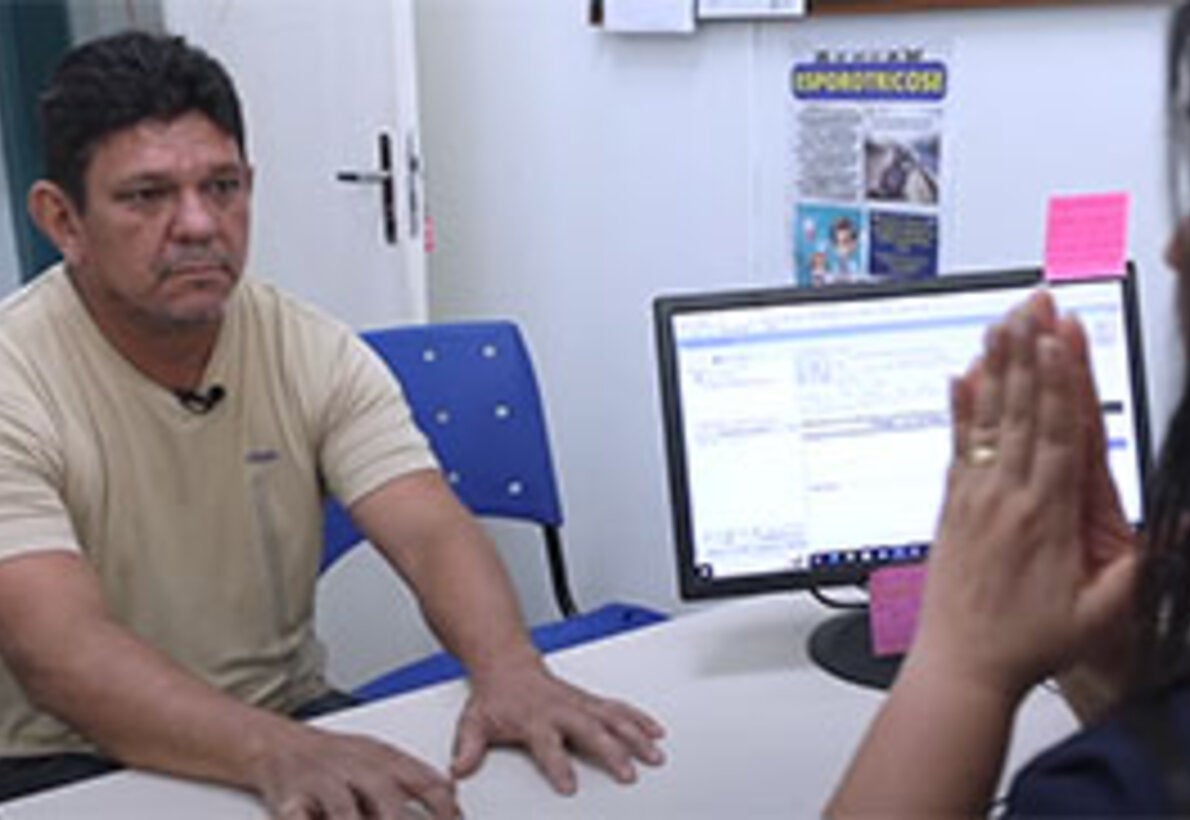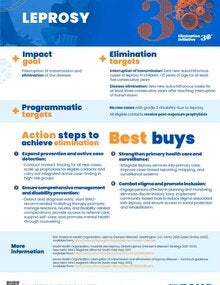SUBMENU
Leprosy is a chronic infectious disease caused by the bacteria Mycobacterium leprae, also known as Hansen’s bacillus. The disease progress is very slow, with an average incubation period and onset of signs and symptoms of five years. The initial symptoms result in light or darker skin or nodular lesions with loss of sensation. When cases are not treated at the very beginning of the disease manifestation, complications can cause progressive and permanent sequelae, including deformities and mutilations, reduction of the mobility of the limbs, and even blindness.
It primarily affects the skin, peripheral nerves, mucous membranes of the respiratory tract, and eyes. In some cases, the symptom may appear in the first nine months, though it may take up to 20 years to appear. Leprosy is not highly contagious, and it is transmitted through close and frequent contact with people that have not been treated. It is curable, and if treatment is provided, it considerably reduces the chances of disability.
Today, the treatment of leprosy is free -donated by Novartis via WHO - and simple. Most endemic countries are striving to integrate leprosy services into existing general health services.
- In 2023, 182 815 new cases of leprosy were reported globally, 13.6% of which were in the Region of the Americas, where over 90% of cases occur in Brazil.
- In 2018, the Americas reported 30 957 new cases of leprosy, which dropped slightly to 29 936 in 2019. In 2020, the number of detected cases dropped drastically to 19 195, a 35.9% decline compared to the previous year, largely due to the impact of the COVID-19 pandemic. In 2021, cases rose slightly to 19 826 (631 more than in 2020). The upward trend continued in the following years, with 21 398 cases reported in 2022 and 24 773 in 2023.
- In 2023, out of 49 countries and territories, 27 reported new leprosy cases, totaling 24 773. Of these, 92% (22,773 cases) ocurred in Brazil. Other countries with a significant number of new cases that year included Venezuela (338), Colombia (267), Paraguay (288), Argentina (134), Cuba (142), Mexico (121), and the Dominican Republic (87).
- People affected by leprosy are often subject to discrimination and stigmatization. This situation has negative effects on access to diagnosis, outcome of treatment and outcomes of care, in addition to violations of civil, political and social rights. Ending discrimination, stigma and prejudice is fundamental to ending leprosy.
- In 1992, PAHO/WHO began promoting the Regional Plan of Action for the Elimination of Leprosy in the Americas for coverage with multidrug therapy. Since then, a 42% treatment coverage rate has been achieved and, since 2001, coverage has been almost universal. The Organization provides medication free of charge to all people who need it, through donations from the Novartis Foundation for Sustainable Development.
- In 2009, the Member Countries of PAHO/WHO, through Resolution CD49.R19, 2009, committed themselves to the goal of eliminating leprosy as a public health problem, at the first sub-national level for 2015 and in 2012, PAHO/WHO formulated an "Action Plan to Accelerate the Achievement of the Elimination of Leprosy in Latin America and the Caribbean," achieving a reduction in the prevalence of this disease to less than 1 case per 10 000 inhabitants.
- Resolution A/RES/65/215 for the "Elimination of Discrimination against Persons Affected by Leprosy and their Families" was approved by the General Assembly of the United Nations in December 2010 in order to promote the formulation and application of policies and measures to prevent discrimination against people affected by leprosy and their families.
- In 2016, the Directing Council of PAHO/WHO approved Resolution CD55.R9 that includes the implementation of the Plan for the elimination of neglected infectious diseases, including leprosy.
- WHO developed the 2016-2016 Global Leprosy Strategy, which provides guidance to those who manage national leprosy programs to carry out actions to reduce the burden of disease and in collaboration with various sectors, including organizations who work for human rights and gender equality.
- In 2018 The Guidelines for the Diagnosis, Treatment and Prevention of Leprosy was published by WHO. It provides state-of-the-art knowledge and evidence on leprosy diagnosis, treatment and prevention based on a public health approach in endemic countries.
More information: Towards zero leprosy. Global leprosy (Hansen’s Disease) strategy 2021–2030




























